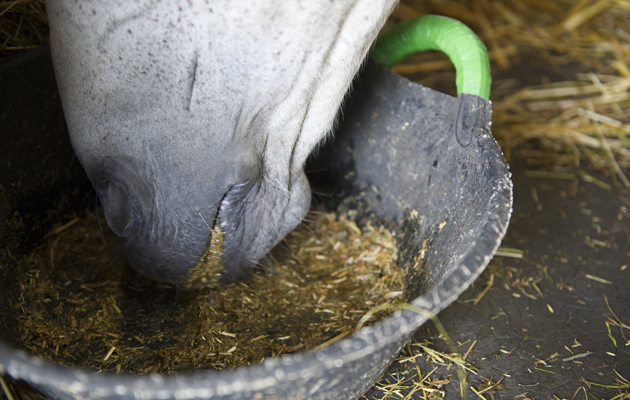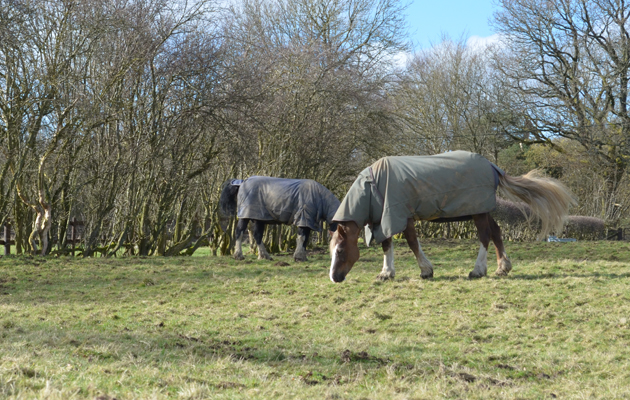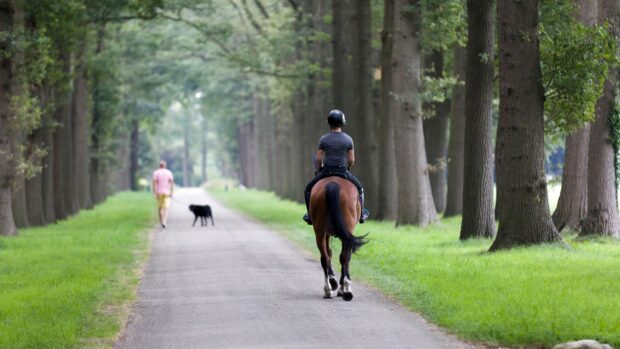Owners may well be rugging their horses when it is not necessary – and may be compromising their welfare as a result, a study has shown.
Although it has become routine for many horses to be rugged all year, there have been few studies on rugging, and none on the effects of different rugs on horses’ body temperature.
Kim Hodgess, an MSc student from Duchy College, Devon, presented the findings of her pilot study at the International Society of Equitation Science (ISES) conference in Rome in September.
“Like humans, horses have a ‘thermoneutral zone’ (TNZ) – an optimal range of temperatures within which they can comfortably maintain their own body temperature. For adult horses in mild climates, this is between 5C and 25C,” said an ISES spokesman.
“Humans, on the other hand, have a more limited TNZ of between 25C and 30C when naked. This means when humans feel cold, horses are still well within their comfortable zone. Humans often make decisions about rugging their horses based on whether they feel cold themselves, so they may well be using a rug on their horse when it really is not necessary.”
Ms Hodgess’ work involved horses who were routinely rugged, 10 kept stabled and two turned out. Three wore sweet itch rugs, six fleeces and six “light quilted” rugs, while two were left unrugged; one stabled and one turned out.
The horses’ surface temperature was taken using data loggers just below the point of the hip, while the environmental temperature was taken by separate loggers on the stable doors or in the field. All temperatures were recorded every minute for 24 hours.
The results showed significant differences between the temperature of the horses wearing different rugs.
Those in sweet itch rugs had an average temperature increase of 4.2°C, those wearing fleeces 11.2°C and those wearing light quilted rugs 15.8°C.
“The horses wearing fleece and light quilted rugs were found to have a significant increase in surface temperature,” the ISES spokesman said. “Four rugged horses had surface temperatures between 24C and 30C, compared to the control horses at 12.5C to 18.5C, when the environmental temperature had fallen below the TNZ to 4C-4.5C.
“The researchers concluded that some types of rugs can significantly increase horse surface temperature beyond temperatures that are comfortable for the horse and could therefore compromise the horses’ capacity to regulate their own temperature.”
The spokesman added that selecting the right type and weight of rug for each individual horse, and the environmental conditions, is “vital”.
“Appropriate use and application must be seriously considered to ensure they do not have a detrimental impact on horse welfare,” he said.
Ms Hodgess said the research had made her question the welfare of rugged horses.
Continues below…

Warning as well-meaning owners ‘make horses’ lives a misery’
Over-rugging and rider and horse obesity are among the issues affecting horses in this country, World Horse Welfare has warned

Subscribe to Horse & Hound magazine today – and enjoy unlimited website access all year round

Over-rugging is ‘a man-made welfare problem’ say vets
Owners have been warned of the risks of rugging their horses unnecessarily
“Questions that remain unanswered for me are: do dark coloured sweet itch rugs increase horse temperature, do rugs interfere with mutual grooming and can skin condition deteriorate with prolonged use of rugs?” she added.
“Although this study found sweet itch rugs had no impact on thermoregulation, I feel further research with a larger number of horses, in hotter weather conditions, with a mix of dark and light-coloured sweet itch rugs is required before we can be certain there are no negative impacts on equine welfare.
“I would like to continue this area of research, as I feel there is a lot more that could be investigated. A greater understanding of the impact rugs have on horse thermoregulation would help inform our rugging decisions, which has the potential to improve horse welfare.”
For all the latest news analysis, competition reports, interviews, features and much more, don’t miss Horse & Hound magazine, on sale every Thursday.




